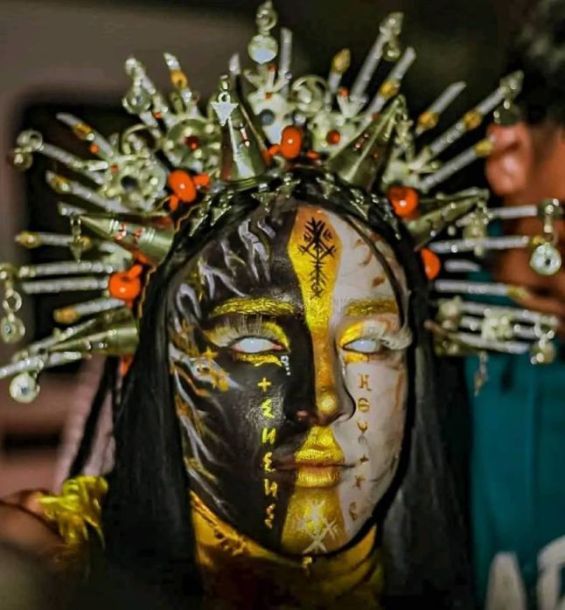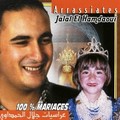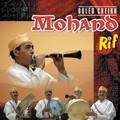The old Moroccan tradition of dressing up in goat or sheep skin, between Eid al-Adha and Ashura, has been carried from father to son.
The tradition has gained tremendous popularity in the last few years among young men, teenagers, and even girls who dress as the old Bilmawen, but with a modern twist. Social media has been flooded with photos, videos, and shorts of young Moroccans getting creative in reviving this centuries-old tradition. Adding wigs, makeup, lenses, and new designs to the mix, dressing up as Bujloud has become an important event for many youngsters.
In Agadir, more precisely Dchaira, a neighborhood known for Bujloud parades, young people gather to show off their latest costume designs. Some have a new costume every year, others stick to one, adding a few new accessories, given the time, effort, and money poured into making one.
 Amine in his Bujloud costume. / Ph. Yabiladi
Amine in his Bujloud costume. / Ph. Yabiladi
Amine, 18, tells Yabiladi about the long process of making his costume for this year. The Ihchach native, a neighborhood in Agadir, spent one month just putting together his Bujloud costume. «I started sewing the skins I acquired the day after I finished my exams», he joked.
For a month, every day the young man poured his passion into making this masterpiece he planned to parade in on Eid day. The student paid 150 dirhams for every goat skin he used in making his furry costume.
«Then I added the accessories. I did a look that required a wig and lenses. And then it's my sister who did the makeup for me. I told her exactly what I wanted, and she did it so well», he proudly declared.
Amine spent almost 1,000 dirhams on the costume he wore on Eid day and plans on wearing until Ashura celebrations. «I was so excited that I wore my costume on Eid day. From there, the festivities start, and in one month, there will be a carnival organized in the city. The best costume in every neighborhood is asked to parade», said the 18-year-old.
And of course, as tradition dictates, Bujloud is there to mess around, strike and wipe whoever comes near. «I have a list of friends that I want to strike every year. It's fun because they don't know it's me», he joked. «Don't worry», he explained, «they don't get mad because they know what to expect. We only hit the people who come near. Those who don't want to get involved stay far».
Amine and many others gather in Ihchach square, where young people compete over who is dressed better.
A female Bujloud
While Bujloud was once a matter of men only, with even female characters played by men, today girls and women are also dressing up for the festivities.
Imane, 16, is one of the many girls who fell in love with the tradition. The Agadir native explained to Yabiladi the effort and time that goes into the masquerade. «The preparation is the hardest part», she exclaimed.
She explained that for a girl, the skins «should be acquired with the help of a man, a brother, a cousin, or a friend». «They go skin-hunting all over the country to get the best goat or sheep skins, the thickest and hairiest ones», which could cost up to 1,000 dirhams each, Imane told Yabiladi.
 Imane in her last year's Bujloud costume. / Ph. Yabiladi
Imane in her last year's Bujloud costume. / Ph. Yabiladi
Then comes the prepping of the skins, a long and exhausting process. «It starts with cleaning them, sunbathing them, or scrubbing them with salt, for two to three days, to remove extra skin, fat, and residues”, Imane detailed. This is done mostly to stop the skins from stinking.
Then it’s time for designing and sewing, which could take months. Some do it themselves, while others who are not skilled enough with needles delegate or ask for the help of their siblings and friends. One costume could take up to 8 or 12 goat and sheep skins.
«Each of us has a look in mind, an idea of what they want their costume to look like», Imane said. «We accessorize, using either traditional items that represent the Amazigh culture or others, and of course the cherry on top, the sheep feet to strike passersby», she concluded.
Entertaining the village
Outside Agadir, the tradition is also held in neighboring villages and regions. In Imintanout, in the Chichaoua Province, Mouhammed and other young people from his village Boulaouan even formed a group to organize the yearly festivities and masquerade.
Called Boulouane Bilmawn, the group cooperates to get their costumes and organize the festivities. «Every one of us has a role, and we prepare for the Boujloud festivities some months in advance», Mouhammed told Yabiladi.
The young man and other youngsters from his village tour weekly souks, local markets, to acquire the skins, then they emerge in the prepping process thoroughly explained by Imane.
To Mouhammed and his friends, the tradition has always been a must for the village, a moment to entertain. A mission his group takes very seriously. «Bilmaouen is a tradition that we grew up seeing every year, our parents and grandparents carried it for years, and it is almost impossible to miss a season», he stressed.

«I feel so happy and accomplished when I meet women and children from my village and they ask us, 'Are you going to dress for Boujloud this year?'» he said. «People love it and expect it every year. That's why we feel like it's our mission. We are happy to see that we entertain them and put a smile on their faces», Mouhammed said.
This revival of the Bilmaouen tradition, with its blend of old and new, highlights the enduring spirit of Moroccan cultural expression. As younger generations take ownership and add their creative touches, this playful masquerade ensures its place in Moroccan festivities for years to come.




 chargement...
chargement...












